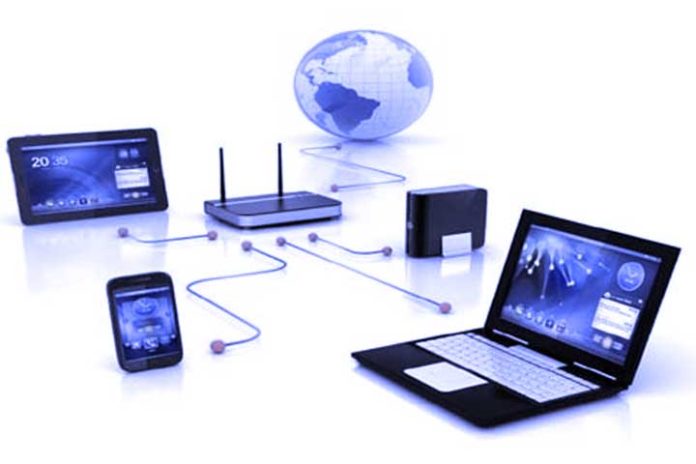The installation of a computer network is essential for a successful digital transformation. The latter is always accompanied by a multitude of projects to be implemented internally, such as the implementation of a company network (via computer cabling, fiber optics and company WiFi, etc.).
Traditionally, setting up a corporate network will make it possible to connect several computers to each other, and to servers, printing devices, backup devices, the Internet, etc.
In the era of mobility and all-digital, the pillars of the computer network are evolving. It should no longer be limited to computer cabling.
Faced with an upsurge in cyberattacks, it is also essential to set up effective network monitoring. A network audit of your IS can be useful.
But let’s go back first to the pillars of your computer network.
Computer cabling
Computer cabling represents the traditional wired network. Indeed, the computer cabling is an Ethernet RJ45 network installation. Setting up an RJ45 Ethernet network is essentially done with RJ45 cables. The name wired network attributed to computer cabling then comes from the use of these RJ45 cables.
Computer cabling is simple to install, stable and inexpensive. The wired network is very widespread and remains a network pillar by still demonstrating its effectiveness today for years.
It is one of the essentials.
Also Read: Internet Cookies: How Do They Work?
Optical fiber
Optical fiber is the broadband technology par excellence. A true pillar of the computer network with its operation via conducted light and not electricity. The main advantage of fiber optics lies in its very high speed. Its speed therefore clearly exceeds that of computer cabling and that of WIFI. Indeed, the speed of the optical fiber can go up to 1 Gb/s.
Fiber optics are lightweight, cost effective, and reliable. Also, it works without interference and its speed is therefore 100% stable. The optical fiber is ultra-secure, because the interception of signals circulating within it is difficult, if not impossible. It thus enables true enterprise IT security . Finally, the local network can easily be connected to the optical fiber.
In the context of an explosion of Internet uses, fiber optics is a real answer to ensure the productivity of your employees. Your local network will no longer be available.
Business Wi-Fi
Company WIFI is a wireless network. Its operation is notably based on radio transmitters and receivers. The installation or use of WIFI (Wireless Fidelity) in a company therefore does not require wiring.
Indeed, the company WIFI can simply be configured on all the company’s equipment (computers, tablets, etc.). However, this equipment must have the appropriate equipment for WIFI reception.
The use of a WIFI network is very flexible. Also, this computer network pillar is less expensive and easy to expand. All company staff can connect to company WIFI from any device (computer, tablet, smartphone, etc.). They will only need to know the WIFI password and stay within the WIFI coverage range. This will also ensure mobility within the company, at the workstation or in meetings.
However, the management of access to a corporate WIFI must be under close supervision. This monitoring will make it easier to update the database of personnel who can access WIFI. As an example, old permissions assigned to ex-employees of the company are by default valid indefinitely. Access management will then make it possible to delete these old authorizations. This is why it is important to perform a penetration test regularly, because some unused accounts can be used for malicious purposes. Indeed, a real must to protect your IS, the intrusion test calls on an expert who puts himself in the shoes of a hacker to detect any security flaws.
Also Read: What Is A Wide Area Network?

